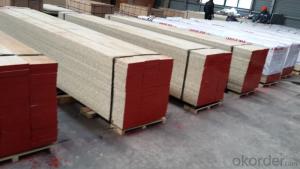When you’re delving into the world of woodworking, construction, or even DIY home improvement projects, you’re bound to come across a variety of materials, each with its own set of characteristics and uses. One such material that often catches the eye of both professionals and hobbyists alike is 15/32 plywood. This standard thickness, which is equivalent to approximately 11.9 millimeters, offers a unique blend of strength, flexibility, and affordability that makes it a popular choice for a wide range of applications. Let’s take a detailed look at this versatile material and explore its many facets.
The Basics of 15/32 Plywood
Plywood is a type of engineered wood that is made from thin layers of wood veneer, known as plies, which are glued together under heat and pressure. The 15/32-inch thickness is a common standard in the industry, and it’s favored for its balance between weight and sturdiness. It’s not too heavy to handle, yet it provides enough heft to be used in a variety of structural applications.
Why Choose 15/32 Plywood?
Choosing the right plywood thickness is crucial for your project’s success. Here are some reasons why 15/32 plywood might just be the perfect fit for your next endeavor:
– Strength and Durability: With its layered construction, 15/32 plywood offers excellent strength and durability. Each layer reinforces the others, creating a robust material that can withstand a lot of weight and pressure.
– Versatility: This thickness is versatile enough to be used for both interior and exterior applications. Whether you’re building furniture, creating cabinetry, or constructing structural elements, 15/32 plywood can handle it all.
– Cost-Effectiveness: Compared to other materials of similar strength, 15/32 plywood is a cost-effective option. It provides great value for the money, making it an attractive choice for those on a budget.
– Workability: Working with 15/32 plywood is a breeze. It can be cut, sanded, and shaped relatively easily, making it a favorite among both professional woodworkers and DIY enthusiasts.
Applications of 15/32 Plywood
The uses of 15/32 plywood are as varied as the projects you can dream up. Here are some common applications where this thickness shines:
– Furniture Making: From tables and chairs to beds and storage units, 15/32 plywood is a go-to material for furniture makers. Its strength and workability make it ideal for creating sturdy, long-lasting pieces.
– Cabinetry and Shelving: The durability and resistance to warping of 15/32 plywood make it perfect for building cabinets and shelves that will hold up over time.
– Flooring Underlayment: Before you lay down that beautiful hardwood or laminate flooring, you might consider using 15/32 plywood as an underlayment. It provides a stable, solid surface that helps to extend the life of your flooring.
– Roof Sheathing: In construction, 15/32 plywood is often used as roof sheathing to provide a solid base for shingles or other roofing materials.
– Siding: For those looking to add a touch of style to their home’s exterior, 15/32 plywood can be used as siding, offering both protection and visual appeal.
– DIY Projects: Whether you’re a weekend warrior or a seasoned DIYer, 15/32 plywood is a fantastic material for a multitude of projects, from crafting custom pieces to building structures in your backyard.
The Environmental Impact of 15/32 Plywood
In today’s environmentally conscious world, it’s important to consider the ecological footprint of the materials we use. 15/32 plywood is generally made from sustainably managed forests, ensuring that the wood is harvested responsibly. Moreover, the manufacturing process of plywood is designed to minimize waste, making it a more sustainable choice compared to some other building materials.
Tips for Working with 15/32 Plywood
While 15/32 plywood is relatively easy to work with, here are some tips to make your project even more successful:
– Choose the Right Adhesive: When gluing layers of plywood together, it’s important to use a high-quality adhesive that can withstand the stress and weight your project will endure.
– Proper Cutting Techniques: Use sharp tools and take your time when cutting 15/32 plywood to ensure clean, precise cuts.
– Sand Smoothly: To achieve a smooth finish, sand the plywood in the direction of the grain. This will help to avoid scratches and an uneven surface.
– Stain and Seal: If you’re using 15/32 plywood for an exterior project or one that will be exposed to moisture, make sure to stain and seal it properly to protect it from the elements.
– Support and Brace: When constructing larger structures, use 15/32 plywood as support and bracing to ensure stability and prevent warping.
The Future of 15/32 Plywood
As the world continues to evolve and construction techniques advance, the demand for versatile, durable, and cost-effective materials like 15/32 plywood is only likely to grow. With its wide range of applications and benefits, it’s clear that 15/32 plywood will remain a staple in the woodworking and construction industries for years to come.
Conclusion
In conclusion, 15/32 plywood is a fantastic material for a myriad of projects. Its strength, versatility, and affordability make it a top choice for professionals and hobbyists alike. Whether you’re building something that will last for generations or creating a one-of-a-kind piece for your home, 15/32 plywood is a reliable and practical option. So the next time you’re at the lumberyard, don’t overlook this standard thickness – it might just be the key to your project’s success.

